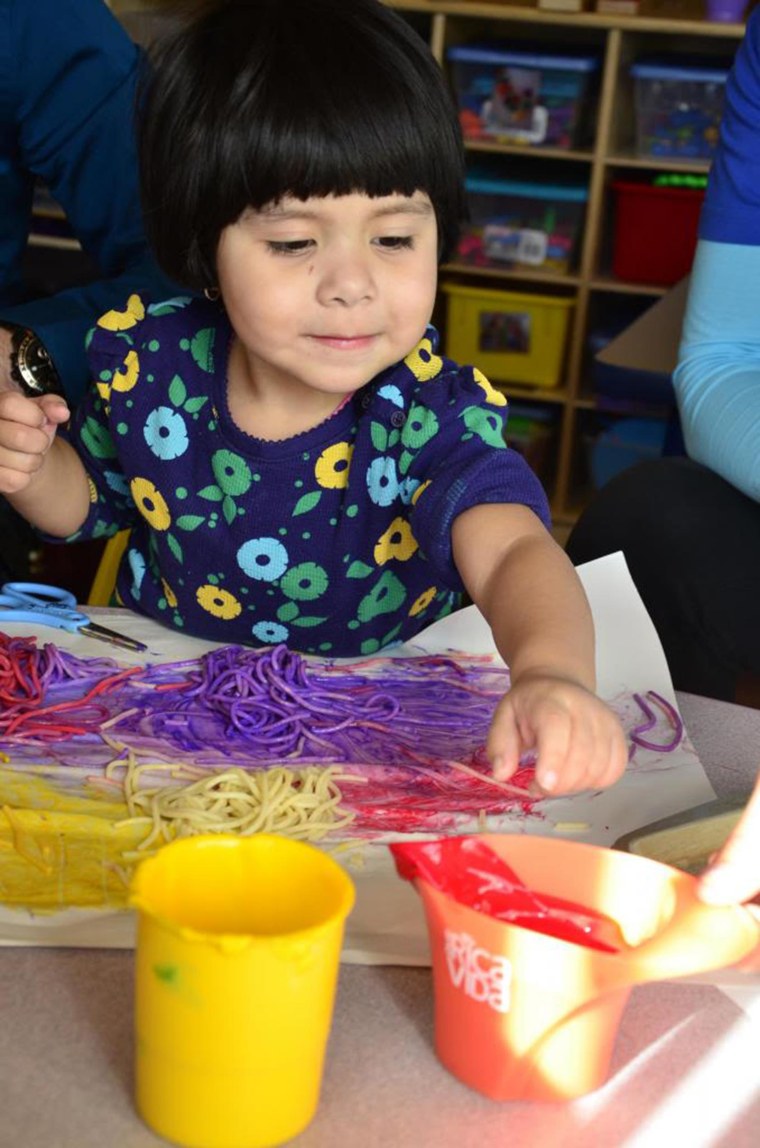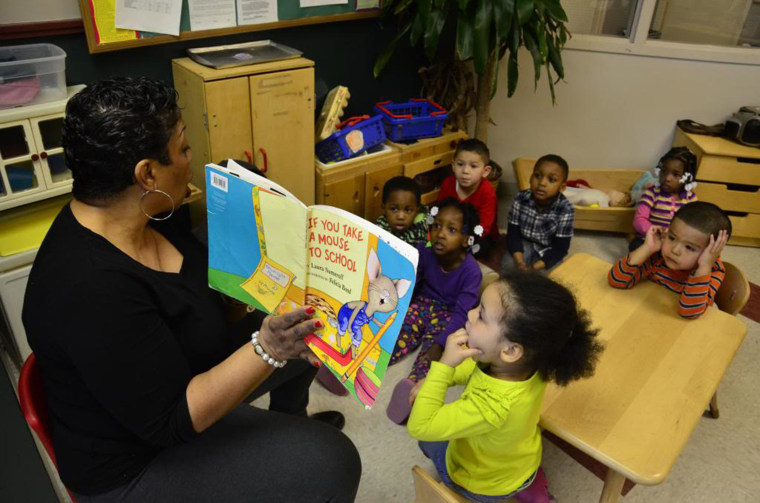For many Latino families, early childhood education remains tenuously out of reach. Yet more and more research points to the importance of early language and educational development as soon as a child is born. One solution that has been used for years at a Chicago center might change that, and it’s as simple as a knock on the door.
Gads Hill Center has been a vital community resource for underserved neighborhoods in Chicago since it was founded in 1898. With three locations in west and southwest Chicago, Gads Hill Center offers many services, including early childhood education programs, for a city that has changed rapidly. About fifteen years ago Gads Hill Center introduced a new program, home visiting, for many of these Latino families in Chicago. Now Gads Hill Center offers two home visiting programs: Home Based Head Start serves 84 children from ages three to five and Early Head Start Home Visiting which serves 90 children, prenatal to age three.
In an area like Brighton Park, which has few centers that can accommodate young children, home visiting is often the only option for many Latinos, which make up 84 percent of the neighborhood. And like many cities, Chicago is strengthening the requirements for home visitors, who must possess an Associate’s Degree in early childhood education.
“We’re not here to see if your house is spotless or if your children have all those basic needs, we’re here for education,” says Azucena Gonzalez, one of the program's directors. Parents and home visitors develop a partnership. “We enhance their skills as far as development milestones and give them information.”
Every staff member at Gads Hill Center is bilingual, an important factor for many of the families participating in the programs. Azucena Gonzalez, the Associate Director of Programs at Gads Hill Center, says there’s a distinct comfort level that plays into the success of home visiting.
“We relate well to the families and they actually embrace us coming into their homes and their environment,” she says. “We’re not here to see if your house is spotless or if your children have all those basic needs, we’re here for education,” says Gonzalez.

Many participants in the Gads Hill Center home visiting programs learned about the initiatives through word of mouth in the community. Currently interested families can contact Gads Hill Center and a series of prompts, both in Spanish and English, can direct them to the proper service they are interested in.
Parents and home visitors develop a partnership. “We enhance their skills as far as development milestones and give them information,” explains Gonzalez. Part of this partnership involves creative ways for the families to use their home as a place for educational activities, which can involve simply going through an illustrated book.
For children under three years old, home visitors arrive about three or times a month. At that age just hearing and being exposed to as many words as possible is critical for cognitive development. These activities can also be tailored to family members who might have little education themselves.
Studies have shown that early parental involvement in a child’s education is hugely impactful on future academic success. Yet one of the debilitating effects of poverty is little access to a high-quality education.
Chicago has seen an explosive growth in its Latino population. Currently, almost 40 percent of children enrolled in Chicago’s public school system are Hispanic; according to the Latino Policy Forum, one in four Latino children in the Windy City are living in poverty.
It's a cycle that has become devastating for many Hispanics, as the Latino Policy Forum has outlined. “Too often, Latino children start school up to six months behind their peers, the start of a well-documented achievement gap that persists up through high school, resulting in low graduation rates, college enrollment and completion, limited career prospects, and earning potential.”
The idea of home visits is appealing for many Hispanic families who may have qualms at sending their child away from home for their education. “Certain families are not ready to drop off their child in a center-based [facility],” says Gonzalez. Home visiting omits the need for transportation, a prohibitive cost factor for many low-income families.
In November of 2013 the White House held a National Summit on Hispanic Early Learning. Libby Doggett, the Deputy Assistant Secretary for Policy and Early Learning at the Department of Education devoted a portion of her recommendations to home visiting.
“Every family needs the opportunity to have a mentor and a coach – somebody who helps get those books, helps them to learn to read, or at least tell stories and look at those pictures with their young children,” said Doggett.
For Gads Hill Center, a robust amount of their financial support comes from Chicago’s Department of Family and Support Services (DFSS). Matt Smith, the Communications Director for DFSS, recognizes the growing popularity of home visiting with Latino families in Chicago. “Our Head Start and Early Head Start recruitment efforts go all year round and include targeted strategies to better attract and serve eligible families in Chicago’s Latino community.”
Recently, the Department of Health and Human Services awarded the city of Chicago $600 million for early childhood education programming over the next five years. Many proponents of early education hope some of that money goes towards more home visiting programs, which are expensive to finance.
Though immigration status or fears of deportation are common impediments for Latino families seeking out early education for their children, education advocates have high hopes for increasing home visiting throughout Illinois.
Like many of her co-workers at Gads Hill Center, Gonzalez sees the tremendous upside to home visiting. “[It’s] like giving the parents a taste of what early education is.”
